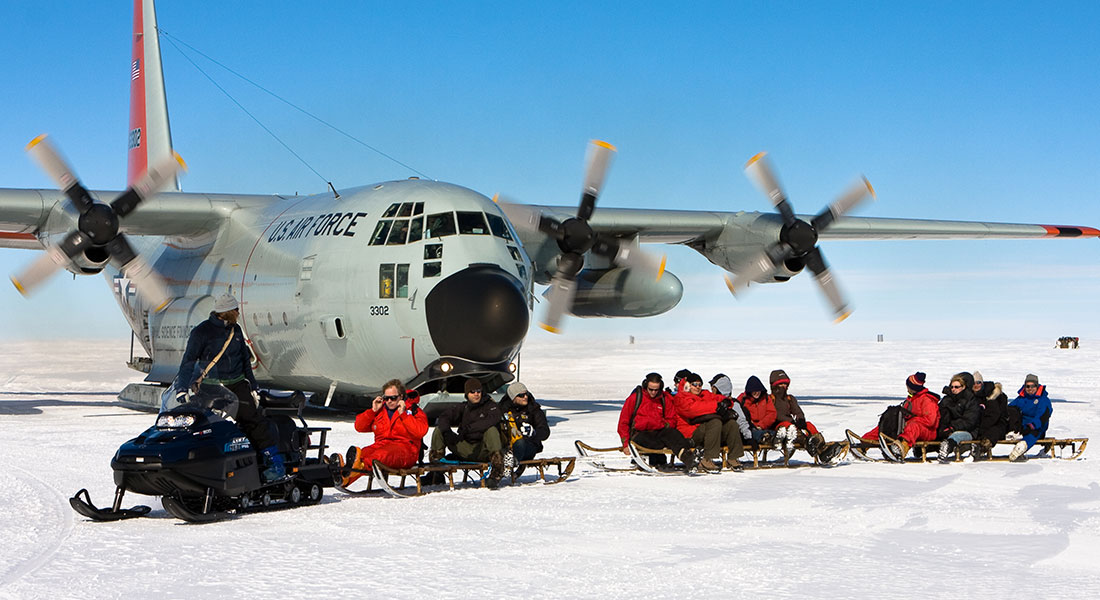Remote sensing group
Remote sensing data are used to monitor glaciers, ice sheets and sea level from space. We analyze remote sensing data to map the present changes and understand the drivers.
Contact: Aslak Grinsted and Christine Hvidberg
Satellite derived accumulation over Greenland using machine learning
 There are no established methods to estimate snow accumulation in Greenland from satellites. This is important to understand the ice sheet mass balance, and thus sea level rise projections. In this project you will apply supervised machine learning to remote sensing products in an effort to estimate greenland accumulation.
There are no established methods to estimate snow accumulation in Greenland from satellites. This is important to understand the ice sheet mass balance, and thus sea level rise projections. In this project you will apply supervised machine learning to remote sensing products in an effort to estimate greenland accumulation.
Contact: Aslak Grinsted and Christine Hvidberg.
Training a machine to date ice penetrating radar images
 The NASA Operation Ice Bridge have collected ice penetrating radar profiles over the Greenland ice sheet since the 1990s. These data show isochrones (layers of constant age) that can be followed over large distances. It is however a massive undertaking to manually interpret and assign an age to these data. Can we teach a machine to recognize the patterns associated with layers of specific age?
The NASA Operation Ice Bridge have collected ice penetrating radar profiles over the Greenland ice sheet since the 1990s. These data show isochrones (layers of constant age) that can be followed over large distances. It is however a massive undertaking to manually interpret and assign an age to these data. Can we teach a machine to recognize the patterns associated with layers of specific age?
Contact: Aslak Grinsted.
Measuring ice flow from space
 In this project you will use satellite imagery to quantify ice flow, and how it changes over time. There are many possible options concerning study region. The project will be using the ImGRAFT open-source toolbox.
In this project you will use satellite imagery to quantify ice flow, and how it changes over time. There are many possible options concerning study region. The project will be using the ImGRAFT open-source toolbox.
Contact: Aslak Grinsted.
Ice flow and machine learning
 Ice sheet mass balance is a key factor in controlling present and future sea level rise. Ice flow velocities are observed from space using overlapping pairs of images, but the derived velocity maps are not complete. In this project, we will use satellite-derived surface velocity data from GEUS’s PROMICE project and machine learning techniques to study changes in Greenland outlet glaciers in ultra-high resolution in space and time. The project is done in collaboration with researchers at GEUS.
Ice sheet mass balance is a key factor in controlling present and future sea level rise. Ice flow velocities are observed from space using overlapping pairs of images, but the derived velocity maps are not complete. In this project, we will use satellite-derived surface velocity data from GEUS’s PROMICE project and machine learning techniques to study changes in Greenland outlet glaciers in ultra-high resolution in space and time. The project is done in collaboration with researchers at GEUS.
Contact: Christine Hvidberg and Aslak Grinsted.
Extreme coastal storms in a changing climate
 The St. Petersburg Flood of 1824. In this project you will build empirical models of storm surge threat. The aim is to quantify how storm surge threat has changed over time, and whether we can find predictable behaviour. The study can both be global or local in scope. You may also contact me if you are interested in the empirical modelling other types of extreme weather events (hurricane winds/ extreme rain).
The St. Petersburg Flood of 1824. In this project you will build empirical models of storm surge threat. The aim is to quantify how storm surge threat has changed over time, and whether we can find predictable behaviour. The study can both be global or local in scope. You may also contact me if you are interested in the empirical modelling other types of extreme weather events (hurricane winds/ extreme rain).
Contact: Aslak Grinsted.

